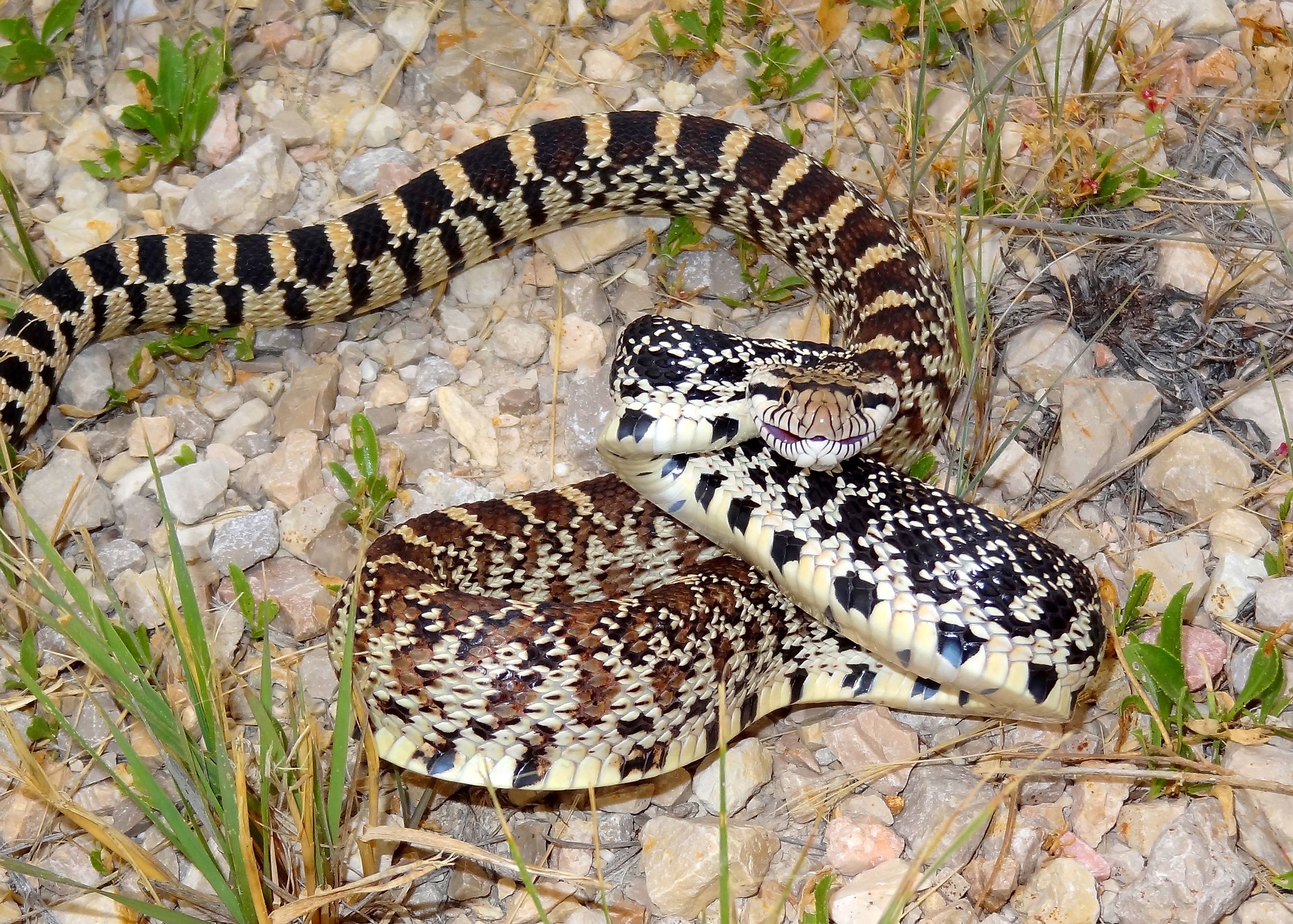
The Most Snake Infested Lakes in North Dakota
North Dakota is full of natural beauty. Its lakes are perfect for swimming and fishing, while its parks and preservation areas sport all kinds of wildlife. Hikers will love the trails that wind among verdant forests and serene marshes, with glimpses of picturesque scenery that make a lasting impression. However, North Dakota is also home to eight different species of snake, with the Prairie Rattlesnake being the most dangerous. Vacationers should be careful of their surroundings and watch out for snakes in these gorgeous lakes in the great state of North Dakota.
Lake Oahe
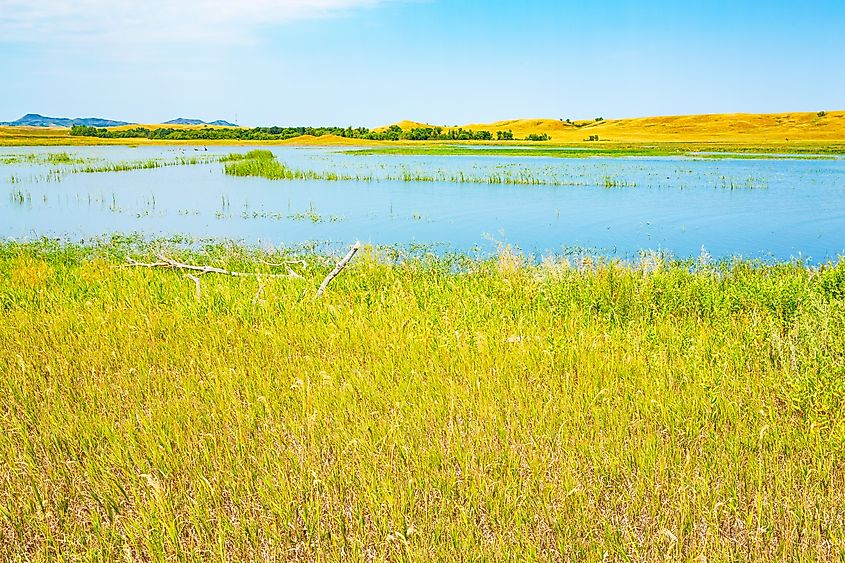
One of the biggest bodies of water in the state at 231 miles long, the shores of Lake Oahe's waters stretch from Pierre, South Dakota, to Bismarck, North Dakota. This lake borrows its name from the Oahe Indian Mission, which was established in 1874 to house the Lakota Sioux tribe. With over 50 recreation areas surrounding the lake, there's something for everyone, from the tranquil hiking trails to the walleye, pike, bass, and salmon that stock the lake for anglers. There's plenty of history and Indian artifacts to be found along this lake's gorgeous shorelines.
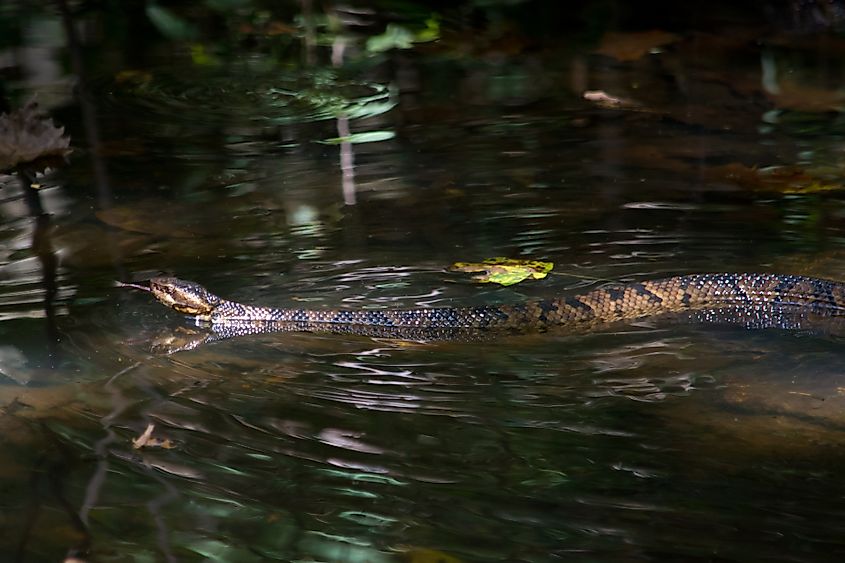
Connected to the Missouri River, Lake Oahe does have one drawback: Its large population of rattlesnakes. The diverse and healthy ecosystem of the Missouri River makes it the most snake-infested river in America. The high water levels and unpredictable patterns of flow make it a perfect spot for water snakes, rattlesnakes, and cottonmouths, along with less dangerous species like western rat snakes and bull snakes. While these creatures can give boaters and swimmers a fright, they're crucial to the thriving ecosystem of the Missouri River basin.
Lake Sakakawea
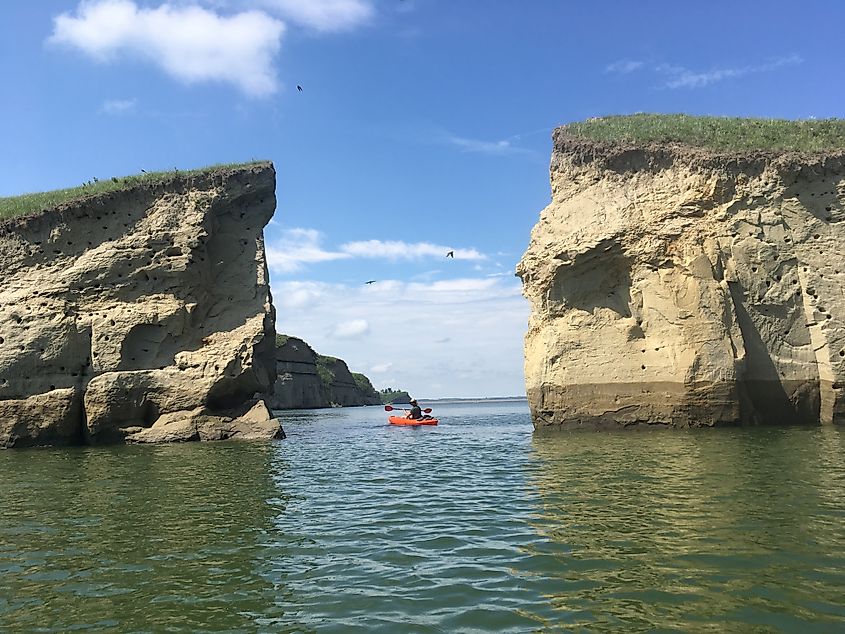
Government Bay at Lake Sakakawea
Lake Sakakawea is the third largest artificial reservoir in the entire county. Stocked with chinook salmon, northern pike, and walleye, it's known for its incredible fishing opportunities. The sandy shores of the swimming beaches are perfect for a day of family fun. For hikers, the famous North Country National Scenic Trail, which runs for 4,800 miles from Vermont, ends here. The trail is easy to access from the Visitor Center, and crosses through a shortgrass prairie before it winds through mature coulees of elm and ash where sightseers often spot pheasants and deer. Bikers, snowshoers, and cross-country skiers also love this trail.
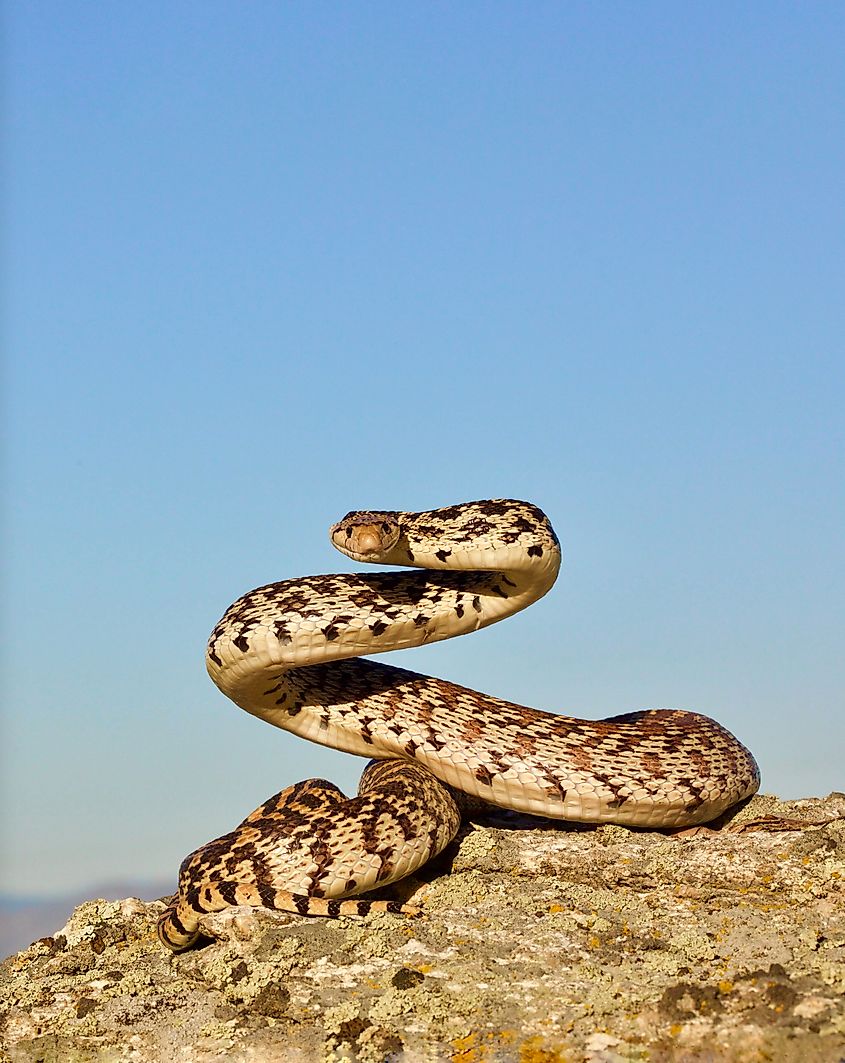
However beautiful the scenic trails may be, snakes still lurk in the shortgrass and rocky outcroppings found in the shores around the lake. Visitors have sighted huge bull snakes sunning themselves on the beach and in the meadows. These snakes can grow up to 72 inches! They're usually a light yellow or straw color, with a row of dark blotches that run down their back, and smaller blotches, bars, or speckles along their sides. These snakes are not venomous, although they may bite when provoked. They help maintain the area's ecosystem by eating mice, rats, and other small mammals.
Brewer Lake
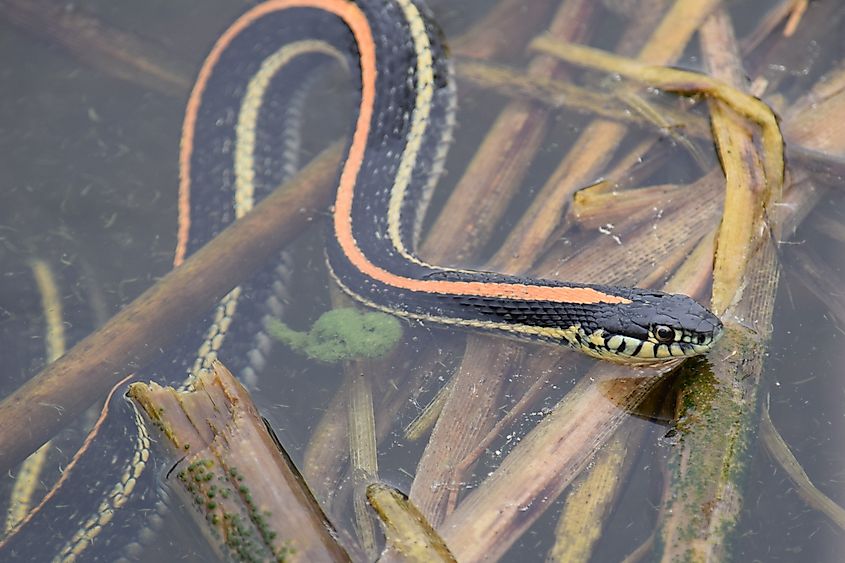
If you're looking for a quiet alternative to larger lakes, Brewer Lake in Cass County is ideal. This grassy-shored lake of 125 acres is perfect for swimming, boating, and fishing. Anglers will love the bluegill, walleye, and bass that the lake is stocked with, while swimmers will appreciate that the lake is no deeper than 48 feet down. The tiny town of Erie nearby offers plenty of amenities for vacation-goers.
Brewer Lake is also home to the beautifully patterned Plains Garter Snake, which can usually be found living near water sources such as lakes, rivers, and marshes. This snake can be spotted by its distinctive yellow-orange stripe down its back, as well as its tire-tread black and yellow patterns all the way down its body. It's one of the most cold-tolerant snakes in the state, being active all the way from April to late October, and will often come out of its den on warmer winter days to bask in sunny places. While the Plains Garter Snake is mildly venomous, its bite is not usually dangerous to humans.
Clausen Springs Lake
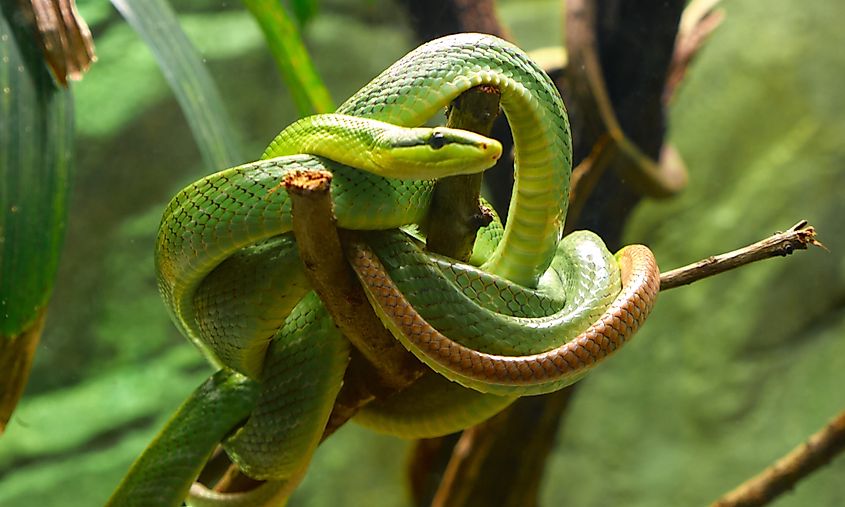
Just 2 miles south of Kathryn, ND, the Clausen Springs Recreation Area is a 545-acre park that features a gorgeous, grassy-shored lake. The drive around the lake offers scenic views of North Dakota's prairie vistas. The North Country National Scenic Trail follows an abandoned rail bed across the northern boundary of the park, while the 2-mile hiking loop around the features a picturesque look at the area. There's even an interpretive site near the main camping area, which teaches visitors about the unique history of Clausen Springs and the Sheyenne River Valley National Scenic Byway.
Hikers might also come across the Smooth Green Snake, also known as the grass snake. This snake can be found in meadows and open woods, marshes and stream edges. It's a fresh spring green along its back, with a pale yellow or white underbelly, and only grows to about two feet long. A master of camouflage, the Smooth Green Snake hides by bobbing its head to mimic grass or branches blowing in the wind. The Smooth Green Snake is not venomous, and seldom bites. It's a favorite for collectors due to its vivid color, but doesn't survive well in captivity.
Devils Lake
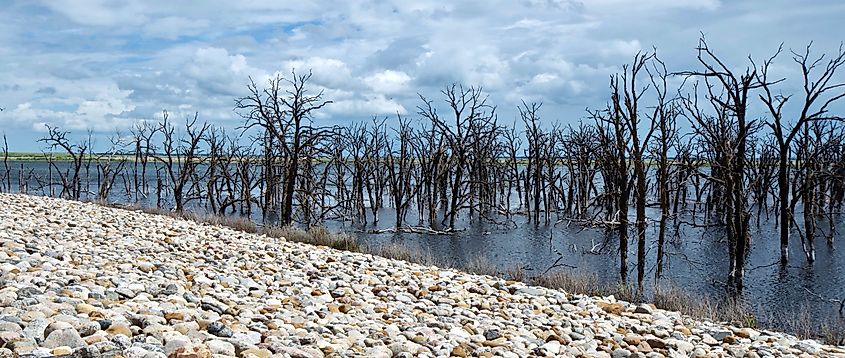
Devils Lake is one of the most popular recreation sites in North Dakota, and with good reason. The White Horse Hill National Game Preserve offers a 4-mile nature trail where wildlife fans can watch white-tailed deer, elk, and bison, and avid birders can spot everything from warblers to wood ducks. There's plenty of room for camping at Grahams Island State Park, and avid anglers will enjoy fishing at the "Perch Capital of the World," where walleye, pike, and bass are also plentiful. The local restaurants offer everything from fine dining to a quick bite at a coffeeshop or donut stand.
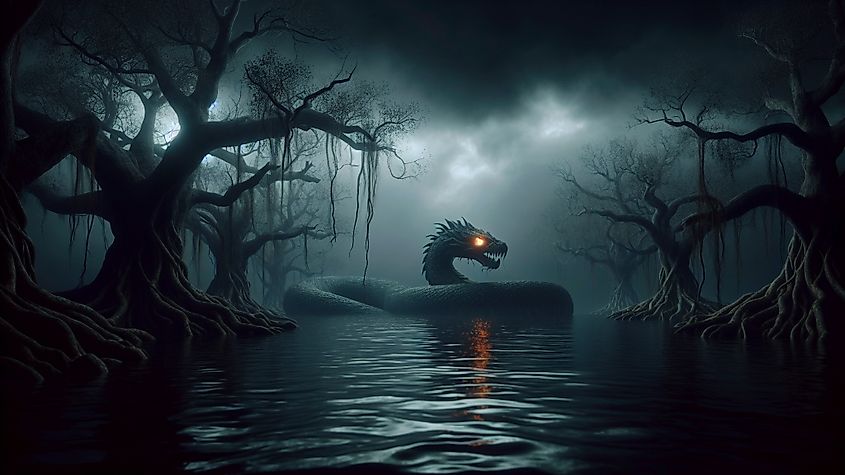
However, the most-sighted snake in Devils Lake is a mythical creature. The Devils Lake Serpent was first spotted by American Indian tribes in the area, who spread stories of the beast's ferocity. One story even notes that the Serpent devoured an entire army of Dakotans during a battle between the Dakota and Ojibwe tribes. This Serpent is usually described as being from 50 to 60 feet long, although some tourists claim to see twelve-foot-long serpents. Most stories describe it as having a winding body and a head that resembles a snake, with red glowing eyes, shiny black or green scales, horns that project from either side of its head, and sharp, jagged fins on its side.
Final Thoughts
Whether real or mythical, the snakes of North Dakota have a major impact on the ecosystem, often eating mice, rats, and other small rodents that can wreak havoc if not kept in check by their natural predators. Hikers and swimmers should be careful when walking or playing around lakes, as rattlesnakes are known to hide in tall grass or under rocky outcroppings. Do not try to handle wild snakes. If you are bitten by a snake while vacationing, call 911 or seek medical attention immediately, as even a small bite can be dangerous.











